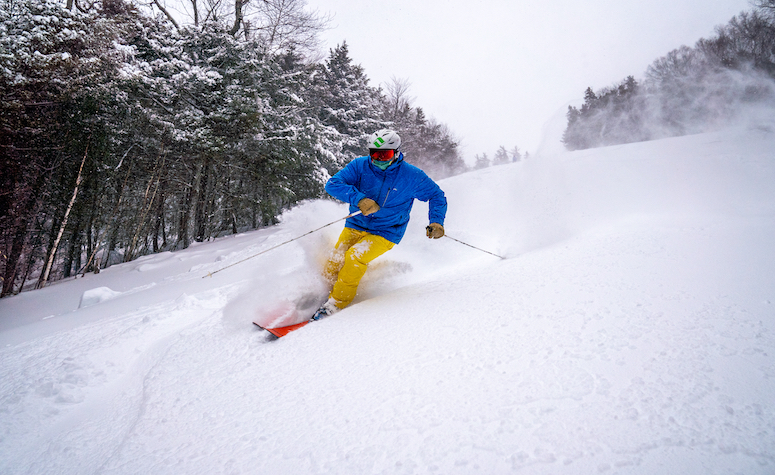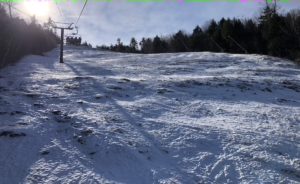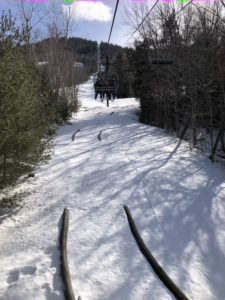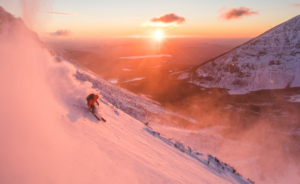
BARTLETT, N.H. — The line was long, but manageable. It certainly wasn’t reminiscent of some of the images that have circulated online this season of the outrageous queues that have materialized at Vail Resorts-owned ski areas across the country.
Even so, the lift attendant at the Flying Bear quad chairlift, located at the base of Attitash Mountain Resort’s Bear Peak, was handling the crowd well on a bluebird day in the White Mountains. Making sure the lift loaded to capacity, she got into a groove putting together proper combinations that she pulled from the lines, utilizing the singles line to fill in every gap along the way. In singles lines across the property, it was less than a five-minute wait all day long, whether it was at the Flying Bear, the Summit Triple or the Flying Yankee. That’s not exactly the kind of nugget you hear about Vail lift queues these days.
It was sometime late morning when a man clad in a blue parka with an Attitash logo came over to relieve the lift attendant for a spell. He grabbed the Epic scan gun from her and started waving it at individuals in the line.
The lift attendant seemed to appreciate the break she was being handed. But she also had a question for the man.






